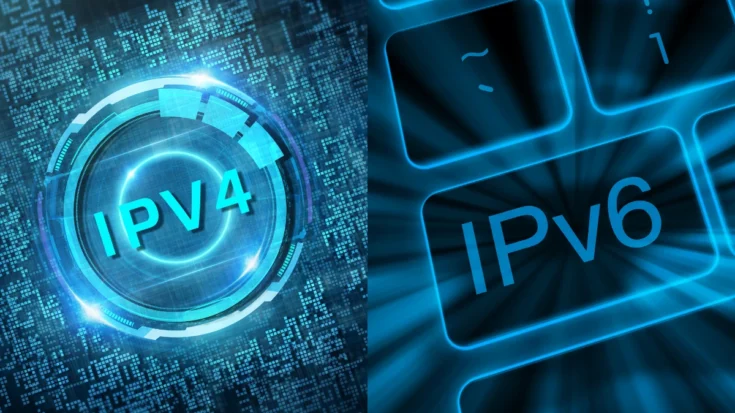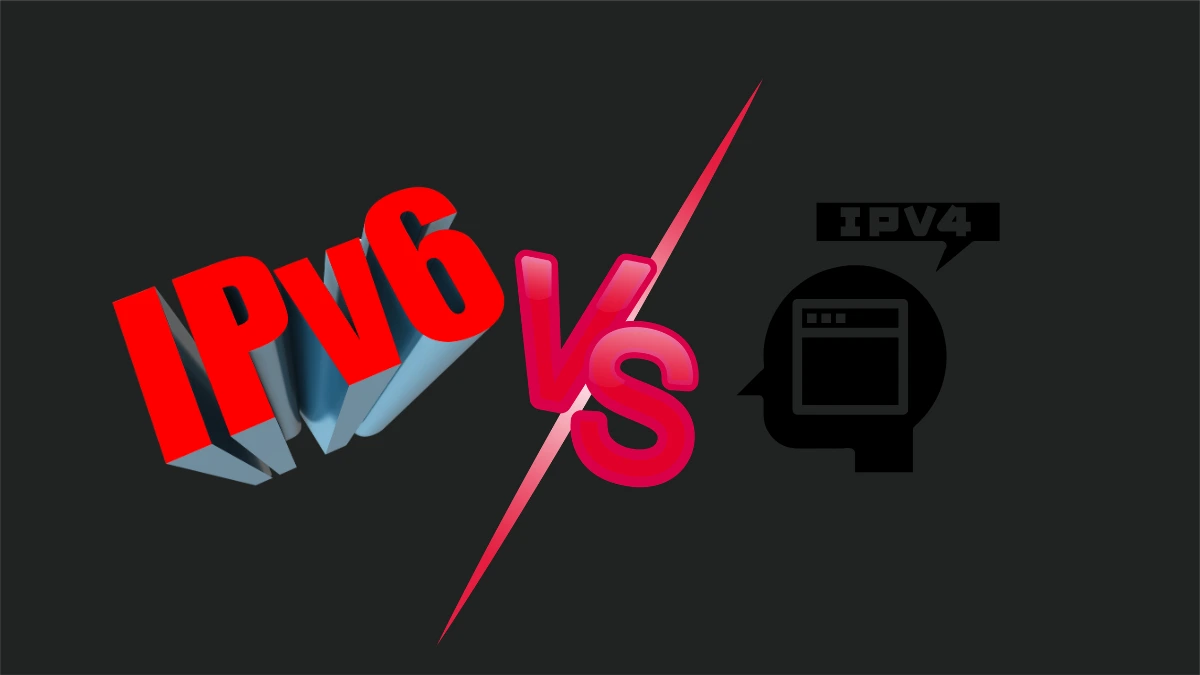IPv6 (Internet Protocol version 6) is a development of IPv4 technology, of course, this development makes a difference of IPv4 and IPv6.
IPv6 as the latest version of the Internet Protocol is here to answer the challenge of needing a larger and more efficient address system. So, the main difference of IPv4 and IPv6 is the ability of IPv6 to offer a much larger address capacity and sophisticated features.
In this article, we will provide further information regarding the significant differences ofIPv4 and IPv6 to consider before using them.
Also Read
Table of Contents
Difference of IPv4 and IPv6

IPv4 and IPv6 are two versions of Internet protocols commonly used to identify and connect devices on a network.
It should be noted that each of these versions has significant differences.
Here is a table that summarizes the main differences between IPv4 and IPv6:
| Aspects | IPv4 | IPv6 |
| Address Length | 32-bit | 128-bit |
| Address Format | Decimals, separated by dots (.) | Hexadecimal, separated by a colon (:) |
| Example Address | 192.168.1.1 | 2001:0db8:85a3:0000:0000:8a2e:0370:7334 |
| Number of Addresses | About 4.3 billion addresses | About 340 undecillion addresses |
| Address Configuration | Manual or using DHCP | Autoconfiguration (SLAAC) and DHCPv6 |
| Security | IPsec is optional, not required | IPsec is mandatory, built-in |
| Header Size | 20 bytes | 40 bytes |
| Fragmentation | Carried out by the sender and router | Performed only by the sender |
| Quality of Service (QoS) | Does not have flow labels for QoS | Has flow labels for QoS |
| NAT compatibility | Requires NAT to save addresses | Does not require NAT, supports end-to-end communication |
| Broadcast | Supports broadcasts | Does not support broadcast, supports anycast and multicast |
| Mobility | Limited, requires additional configuration | Better support mobility with Mobile IPv6 |
| Routing Efficiency | Less efficient due to variable header size | More efficient with simpler headers |
| Address Space | Less flexibility in allocation and subnetting | More flexibility in allocation and subnetting |
Here are the differences between IPv4 and IPv6 in detail:
1. Header fields
In IPv4, header areas have a settled estimate and contain data such as source and goal addresses, TTL (Time to Live), and checksum. On the other hand, IPv6 is a network protocol that has simpler header fields and a fixed size.
Header fields in IPv6 have a simpler form because some elements that are no longer needed are removed or moved to extension options.
2. Addressing

IPv4 addressing consists of 32 bits and is usually expressed in a decimal format such as “192.168.1.1”. This format consists of four octets, each of which has a value between 0 and 255.
Meanwhile, IPv6 addressing consists of 128 bits and is expressed in hexadecimal format such as “2001:0db8:85a3:0000:0000:8a2e:0370:7334”. In its implementation, the hexadecimal format represents values in the range 0 to F.
3. Classes
While IPv4 uses a class A, B, and C system to allocate IP addresses, IPv6 uses the concept of classes based on aggregation and subnetting.
4. Configuration
DHCP (Dynamic Host Configuration Protocol) is a manual configuration used by IPv4 to assign IP addresses to devices.
Meanwhile, IPv6 is a protocol that supports automatic configuration systems via SLAAC (Stateless Address Autoconfiguration).
5. VLSM
VLSM (Variable Length Subnet Masking) is an element in IPv4 that uses subnet masks of different lengths within the same network.
Meanwhile, in IPv6, this element is no longer used due to the existence of a broader addressing design.
6. Routing information protocol
IPv4 uses routing protocols such as RIP, OSPF, and BGP to send information. Meanwhile, IPv6 has its own routing protocols in the form of OSPFv3 and BGP4+ which are specifically designed to support IP addresses.
7. SNMP
SNMP (Simple Network Management Protocol) is still used by IPv4 to manage networks. However, this element is no longer used in IPv6.
8. Mapping
IPv4 still requires NAT to map some private IP addresses to public ones.
In contrast to IPv4, IPv6 is a protocol that no longer requires this element because the number of IP addresses is abundant.
9. QoS
IPv4 still uses QoS (Quality of Service) to prioritize packet processing and bandwidth in TCP / IP applications. In contrast, IPv6 is a network protocol that no longer supports the use of these elements.
10. Network configuration
Please remember that there are various configuration variations in IPv4. So sometimes, this can cause configuration and NAT (Network Address Translation) insertion problems.
To overcome this, IPv6 is a protocol designed to reduce configuration complexity, avoid the problem of running out of IP addresses, and eliminate dependence on NAT.
That’s the difference between IPv4 and IPv6 from header fields to network configuration. Hopefully, this information can help you consider both before using them.


















